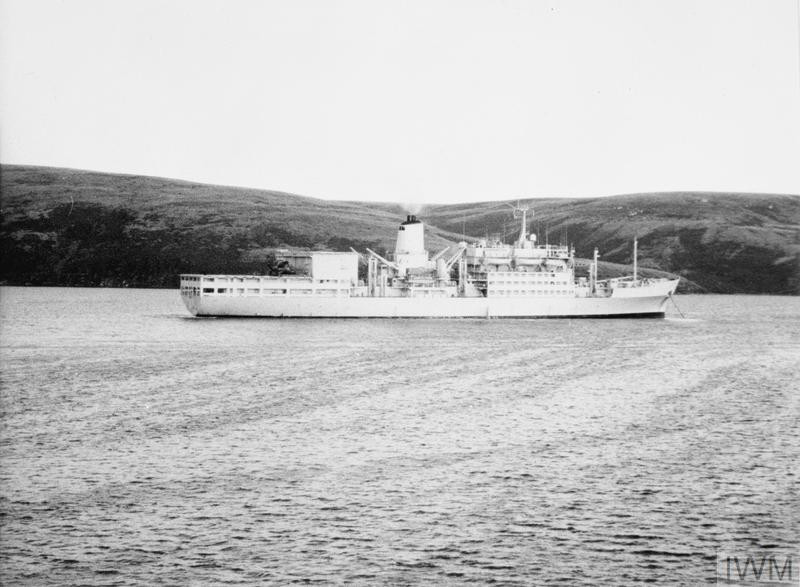With the Argentine invasion force ashore in the Falklands, and reinforcements pouring in by the day, fighting in the South Atlantic just about ceased but the British response was already in train, and diplomatic activity took centre stage.
The events in South Georgia at the end of March had prompted the British government to rapidly deploy a handful of vessels – RFA supply ship Fort Austin was diverted from her Mediterranean station to the South Atlantic to support ice patrol ship HMS Endurance, while nuclear hunter-killer submarines HMS Spartan and Splendid were sent south from Faslane and Gibraltar respectively.
Prime Minister Margaret Thatcher had already been assured by the Chief of the Naval Staff, Admiral Sir Henry Leach, that a task force “could and should” be sent to counter the invasion.
A significant part of this task force would be ships deployed in the Mediterranean on RN-NATO Exercise Spring Train, and an order went out on 1 April warning ships to prepare for duties in the South Atlantic.
This became a formal response following an emergency meeting of the Thatcher’s cabinet on 2 April, a move endorsed by Parliament the following day.
Diplomats had also been active at the United Nations in New York, with British ambassador to the UN Sir Anthony Parsons having already briefed members of the Security Council before the Argentine invasion force had even stepped ashore.
On 2 April, the day of the invasion, Resolution 502 – drafted by the UK – was formally introduced to the UN, calling for a cessation of hostilities, the complete withdrawal of Argentine forces and a joint commitment to find a peaceful, diplomatic solution.
Argentine diplomats were also active in support of their government, but with very much less success than their British counterparts – Resolution 502 was passed by the 15-strong Security Council, with only Panama voting against it and four nations – Russia, Poland, China and Spain – abstaining.
As this was happening the UK was also active in other arenas, gaining valuable support through the EEC – the forerunner of the European Union – NATO and the Commonwealth, although Ronald Reagan’s United States was initially keen to remain neutral in stance.
* These posts can only give a brief sense of what was a complex and fast-moving situation 40 years ago, and cannot cover the involvement of every ship, squadron and unit in detail – for a much more comprehensive account see naval-history.net at https://www.naval-history.net/NAVAL1982FALKLANDS.htm
Today’s image, from the Imperial War Museum collection (© IWM FKD 970), shows supply ship RFA Fort Austin, sent south at the end of March 1982 to counter the expected invasion of the Falklands, at anchor in San Carlos Water.
